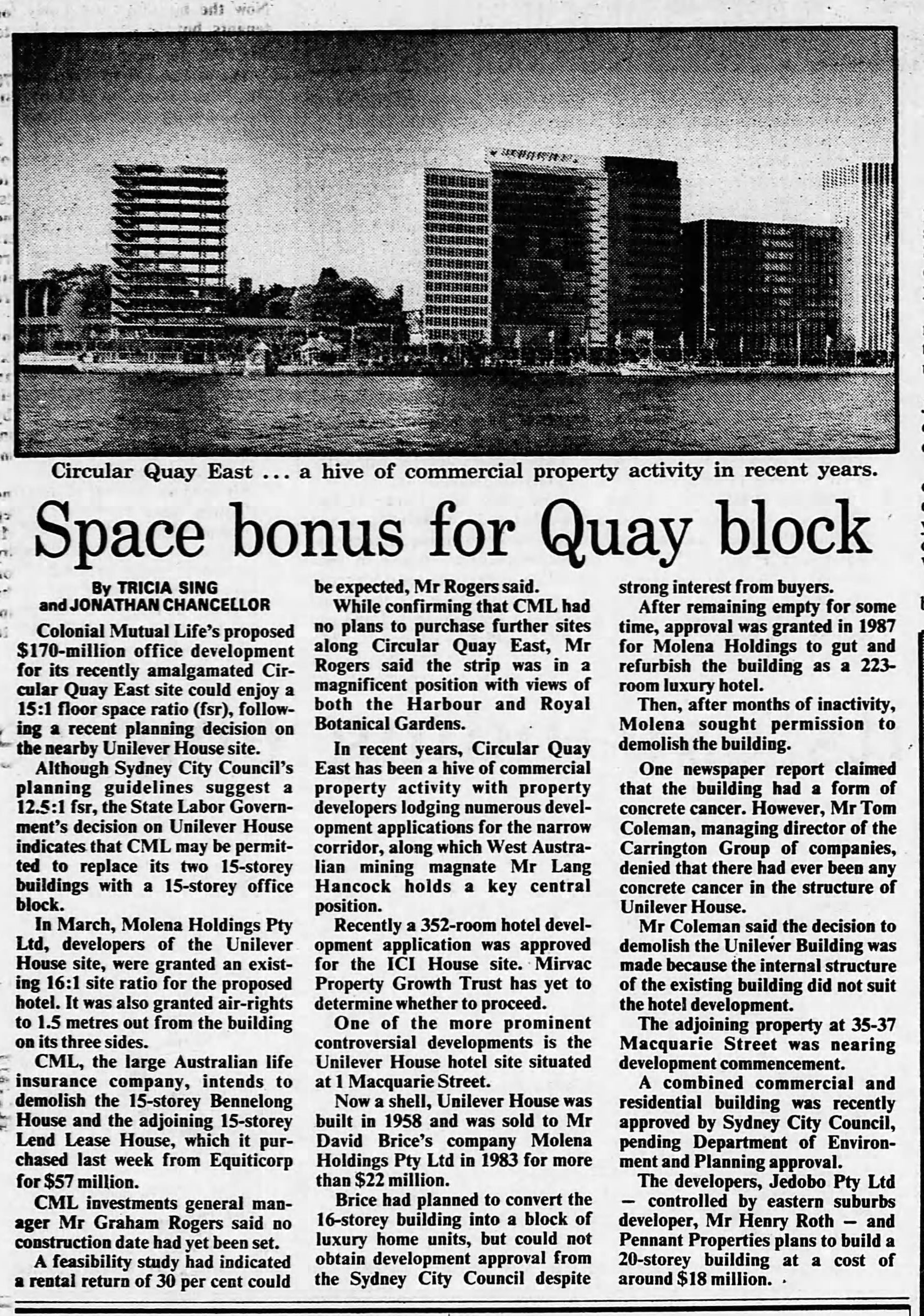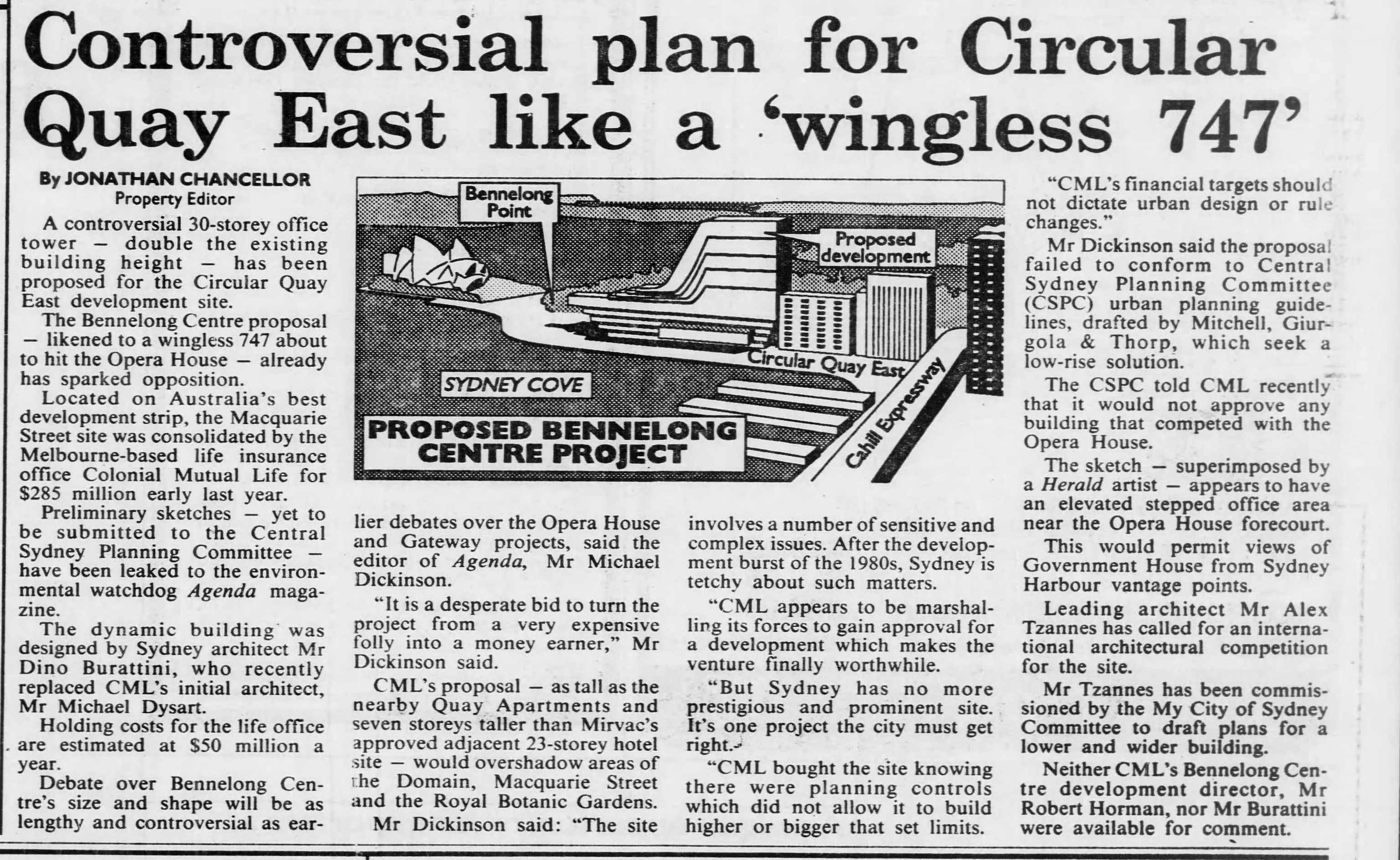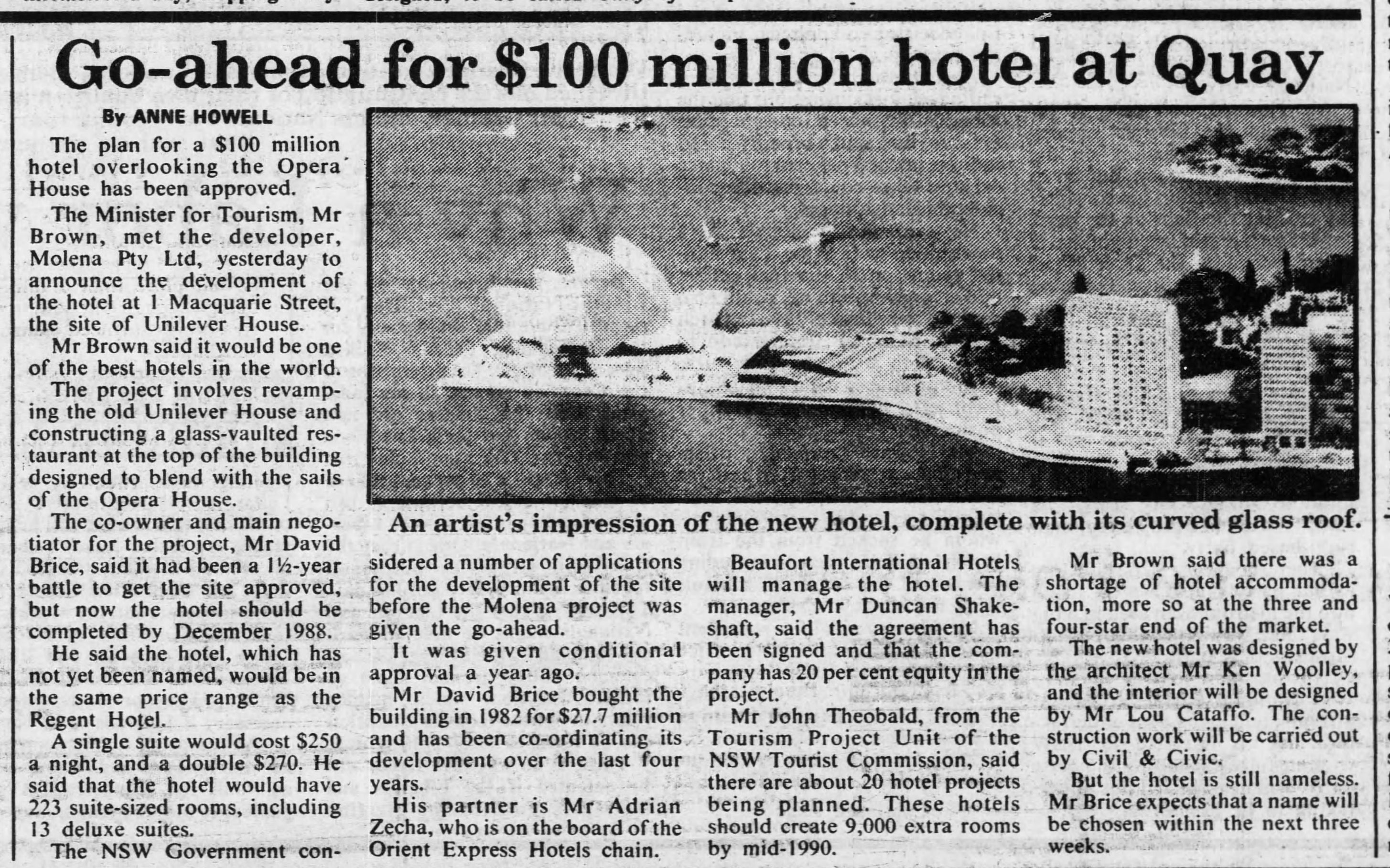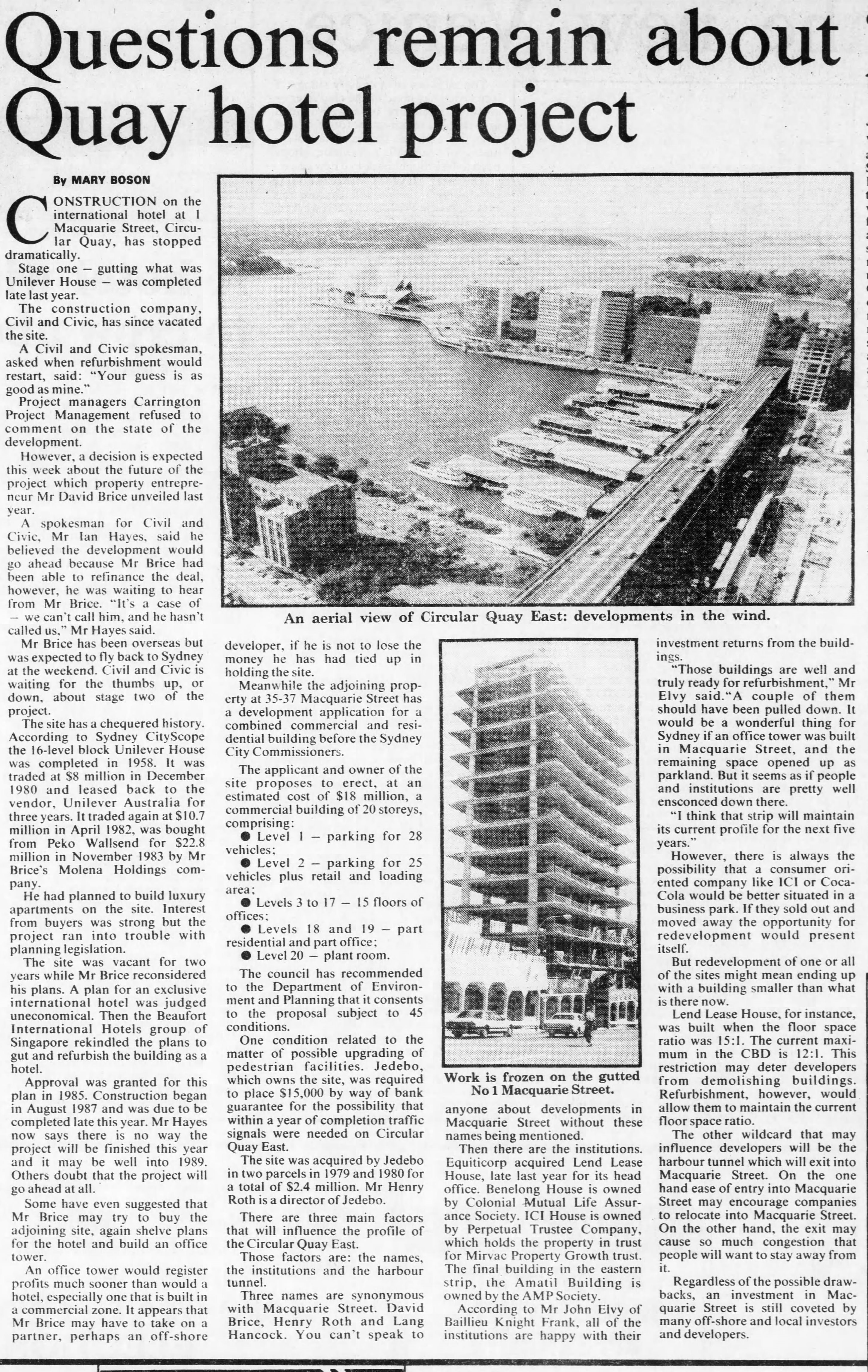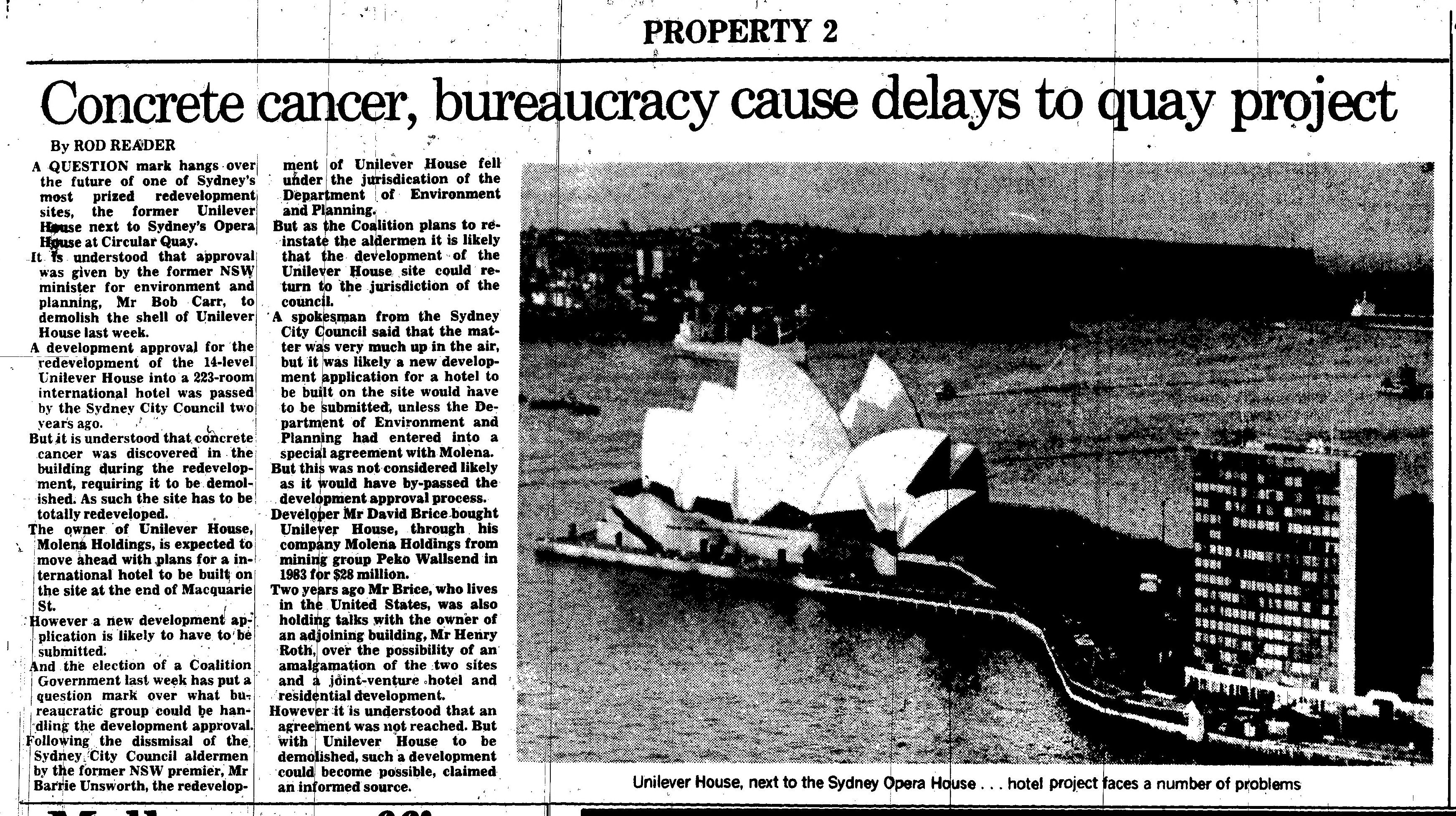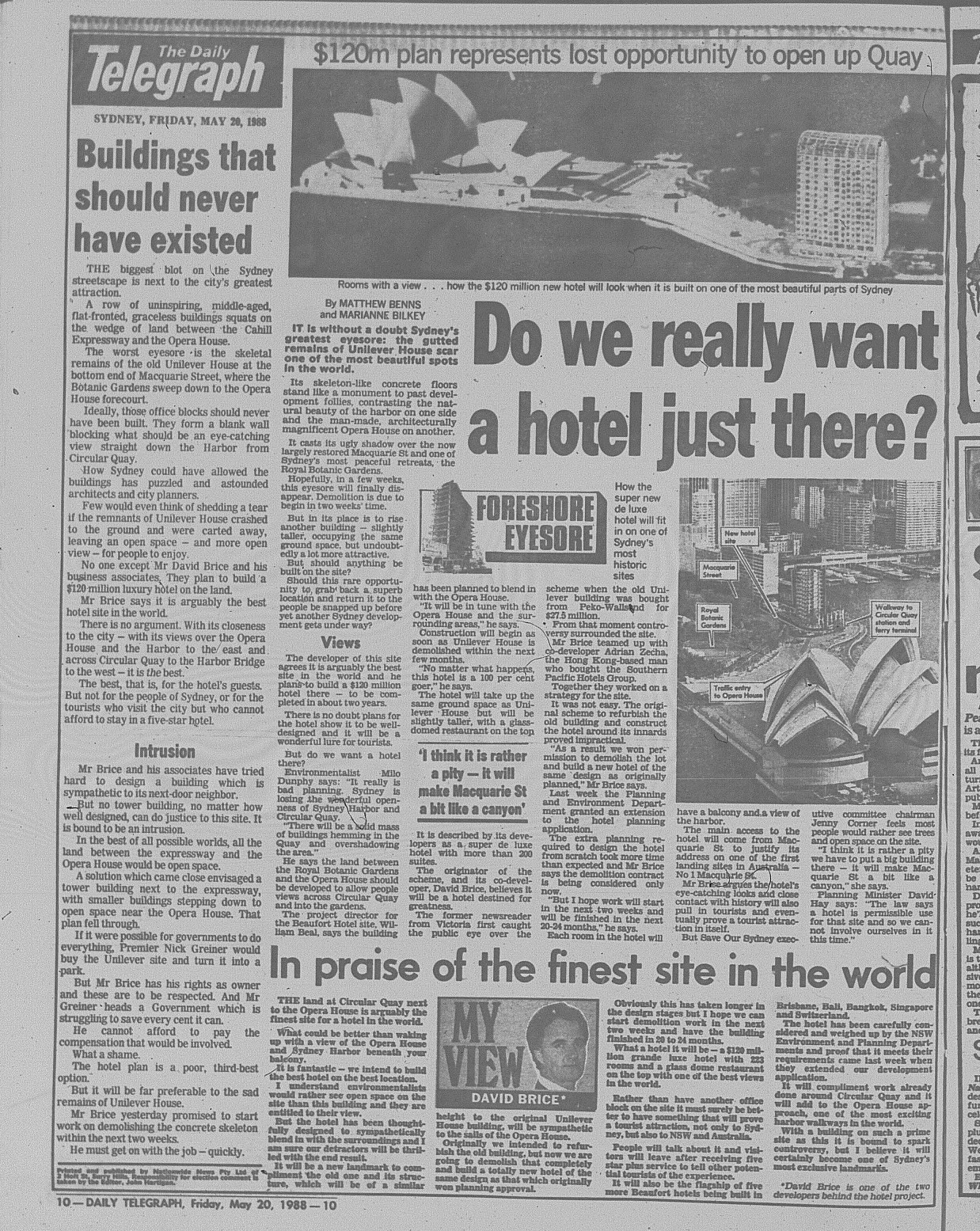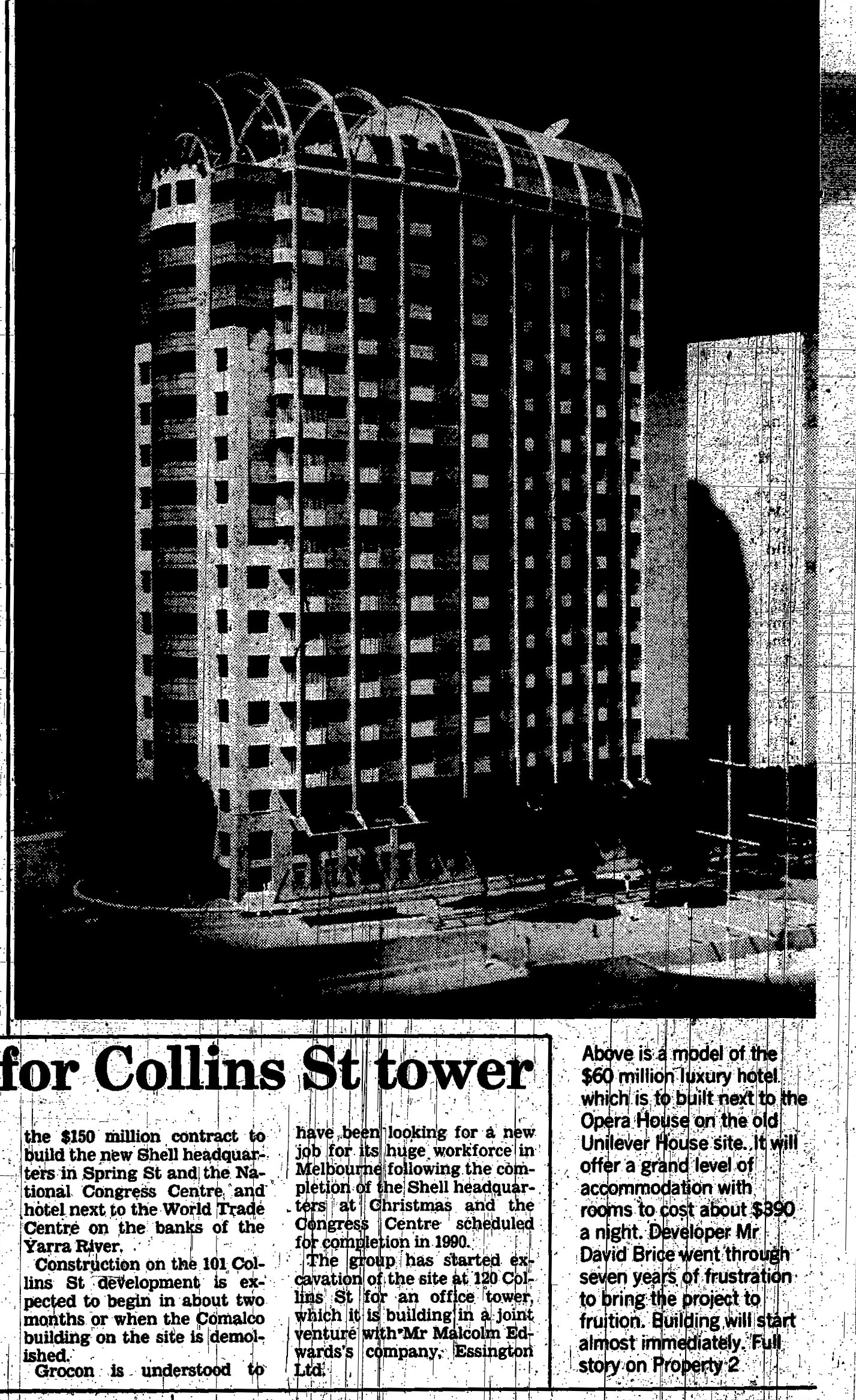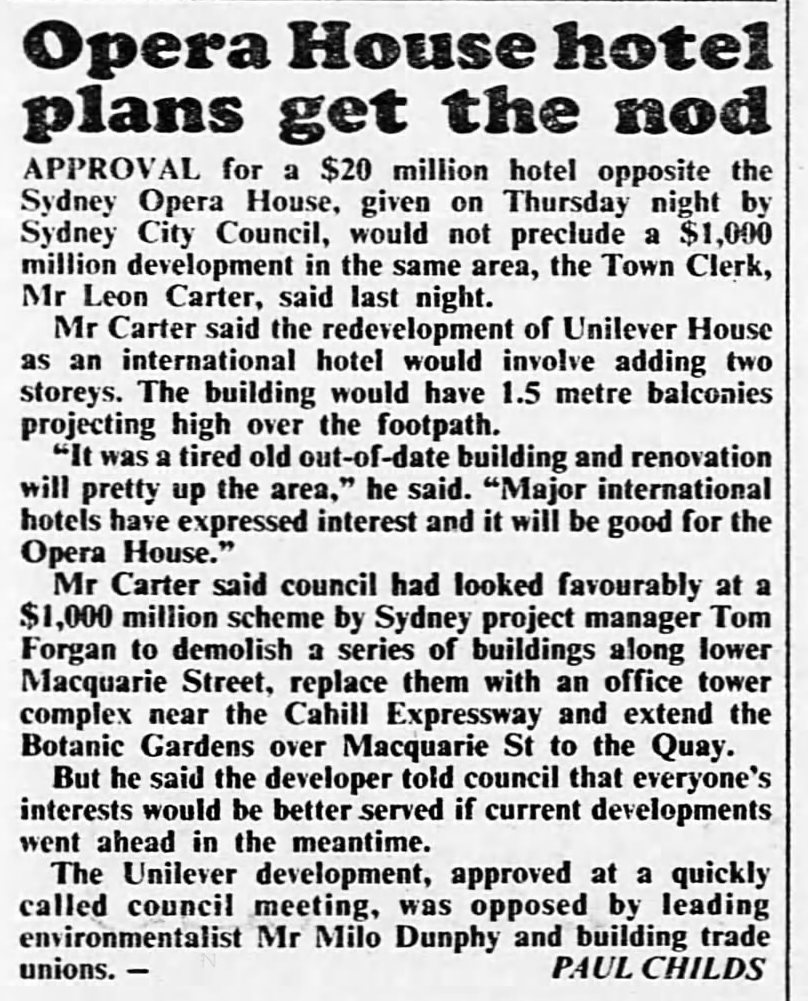In part six of our series, focusing on the redevelopment of East Circular Quay, I am going to focus on 1989 and 1990 as Colonial Mutual Life (CML) undertook further acquisitions of buildings and sites on the block and proposed their plans to redevelop the site.
Last week, I posted this article from The Sydney Morning Herald from 1988 because it focused on why Unilever House was demolished. The article focused on CML acquiring Lend Lease House for $57 million, which adjoined Bennelong House, which it already owned.
Source: Sing, T. & Chancellor, J. 1988. "Space bonus for Quay block". The Sydney Morning Herald, June 7: 34.
In February 1989, it was reported in The Sydney Morning Herald that CML had purchased another three sites - Hope House, 35-37 Macquarie Street and Unilever Hotel Site. All purchases were undertaken separately and had cost CML $250 million.
Source: Chancellor, J. 1989. "The best block of land in the country cost only $250m". The Sydney Morning Herald, February 10: 1.
Therefore, the purchases would extinguish the hotel that was to replace Unilever House and the Jedobo development next door.
CML presented their plans to redevelop the now combined site that same year to Sydney City Council, though it would be the following year before the first plans were made public.
Source: Chancellor, J. 1990. "Controversial plan for Circular Quay East like a 'wingless 747'". The Sydney Morning Herald, October 24: 8.
The plans were leaked to the public and were "likened to a wingless 747 about to hit the Opera House". The architect was Dino Burattini, the architect behind Melbourne's Rialto Towers and the State Bank Building (52 Martin Place) in Martin Place. The building would rise up to 30 storeys tall.
While that plan didn't get off the ground, CML Would unveil a more realistic scheme the following year, which will be the focus of the next entry in the series. However, next week, with the Royal Easter Show due to commence, I will spend two weeks looking at the 1999 Royal Easter Show as I turn back the clock a quarter of a century.
Entries in this series
- East Circular Quay Redevelopment (Series): The first apartment block proposal (1979)
- East Circular Quay Redevelopment (Series): Opera Garden Centre Scheme (1984)
- East Circular Quay Redevelopment (Series): Unilever House Hotel Conversion (1986)
- East Circular Quay Redevelopment (Series): Opera Garden Centre Scheme Revisited (1986)
- East Circular Quay Redevelopment (Series): Unilever House Hotel Conversion (1987)
